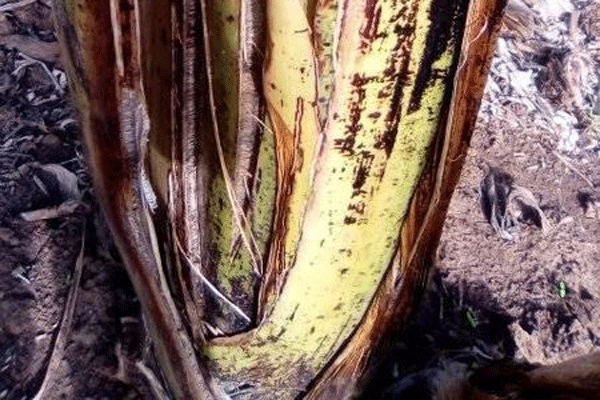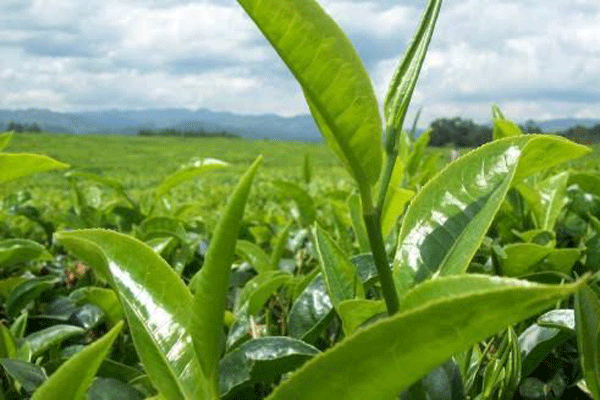Prime
How to manage Fusarium wilt in banana plants

Dangerous. A banana stem infested with Fusarium wilt. PHOTO/GEORGE KATONGOLE
What you need to know:
- The National Agricultural Research Organisation (Naro) has produced hybrids that are resistant to the disease.
What causes my banana stems to crack? What is the possible cure?
Charles Mbangira.
Dear Charles,
This is one of the signs of fusarium wilt. So check for leaves and inside the stem for any colour change to be sure as it can be a sign for another disease.
But for fusarium wilt of banana, popularly known as Panama disease, this is a lethal fungal disease caused by the soil-borne fungus Fusarium oxysporum. It is the first disease of bananas to have spread globally in the first half of the 20th century. The epidemic started in Central America. It has since spread through Asia and reached Africa in 2013.
The fungus enters the plant through the roots and colonises the xylem vessels thereby blocking the flow of water and nutrients.
Disease progression results in the collapse of leaves at the petiole, the splitting of the pseudostem base and eventually plant death.
The fungus cannot be managed using chemical pesticides. The solution best adapted to the continued production of bananas in infested soils is replacing susceptible cultivars by resistant ones.
Similar diseases
The leaf symptoms of fusarium wilt can be confused with those of the bacterial disease Xanthomonas wilt. In plants affected by Fusarium, yellowing and wilting of the leaves typically progresses from the older to the younger leaves.
In plants affected by Xanthomonas, the wilting can begin with any leaf and the infected leaves tend to snap along the leaf blade.
Modes of transmission
The fungus is commonly spread through infected planting material, infested soil and water.
Planting material
Symptomless but infected suckers or rhizomes can transmit the disease when planted in a new area. Infected planting material is often responsible for the local, national and international spread of the disease. Certified tissue-culture plantlets should be free of the fungus and would not contribute to the spread of the disease.
Soil
Staff and visitors to a banana plantation have the potential of moving the fungus in or out through infested soil attached to vehicles, tools and shoes. Untreated soil used as a potting medium can transmit the fungus and animals can also move around fungal spores present in soil.
Water
Spores can be carried in surface run-off water. They can also contaminate irrigation reservoirs.
Disease management
The fungus cannot be controlled using fungicides and cannot be eradicated from soil using fumigants. Drainage, environmental conditions and soil type influence host-pathogen interactions.
Soils that suppress the disease have been reported in Central America, the Canary Islands, Australia and South Africa. However, the chemical, biological and physical factors responsible for this phenomenon are not well understood.
The solution best adapted to the continued production of bananas in infested soils is replacing susceptible cultivars with resistant ones.
Resistant cultivars
Plantain and East African highland bananas cultivars are generally resistant to race 1 strains.
The National Agricultural Research Organisation (Naro) has produced hybrids that are resistant to the disease. They can be obtained from certified nurseries.




